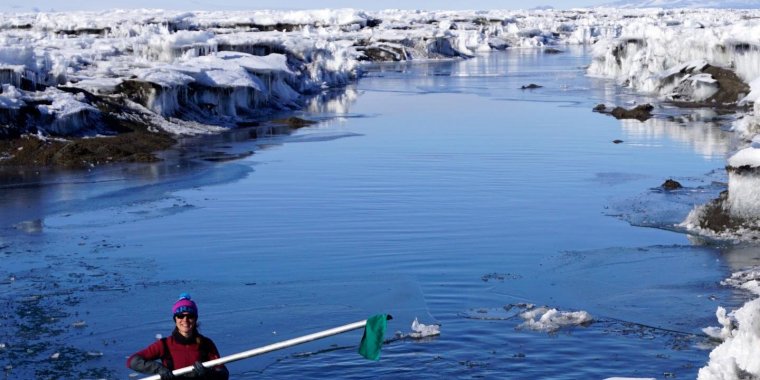| News / Science News |
Reframing the dangers Antarctica's meltwater ponds pose to ice shelves and sea level
Dangers to ancient Antarctic ice portend a future of rapidly rising seas, but a new study may relieve one nagging fear. Meltwater ponds fracturing the ice below them may not cause protracted chain reactions that unexpectedly collapse floating ice shelves.

A meltwater pond in Antarctica. Photo: Banwell/UC Boulder
A study modeled fracture chain reactions and water amounts necessary to repeat a rare, epic collapse such as the 2002 shattering of the iconic shelf "Larsen B."
Larsen B's disintegration was preceded by an atypical heatwave that riddled it with meltwater ponds, focusing researchers' attention on pond fracturing, also called hydrofracturing. They discovered that a melt pond hydrofracturing the ice shelf can prompt neighboring ponds to do the same. Concerns grew of possible extensive chain reactions, which the new study addressed.
The study found that pooled meltwater does fracture ice; however, ensuing chain reactions appear short-ranged. Still, massive increases in surface melting due to unusually warm weather can trigger catastrophic ice-shelf collapses.
"There is a speed limit in the study that shows that an ice shelf can't collapse ridiculously fast," said co-author Alison Banwell, a glaciology researcher at the University of Colorado Boulder. "However, if it becomes as covered in meltwater ponds very quickly as Larsen B was, it can collapse in a similar way."
"The evolution of surface and shallow subsurface meltwater across Antarctic ice shelves has important implications for their stability," said program director Paul Cutler in NSF's Office of Polar Programs. "It is vital to understand the causes of ice-shelf instability because ice shelves buttress against the discharge of inland ice and therefore influence ice-sheet contributions to sea level rise." (National Science Foundation)
YOU MAY ALSO LIKE





